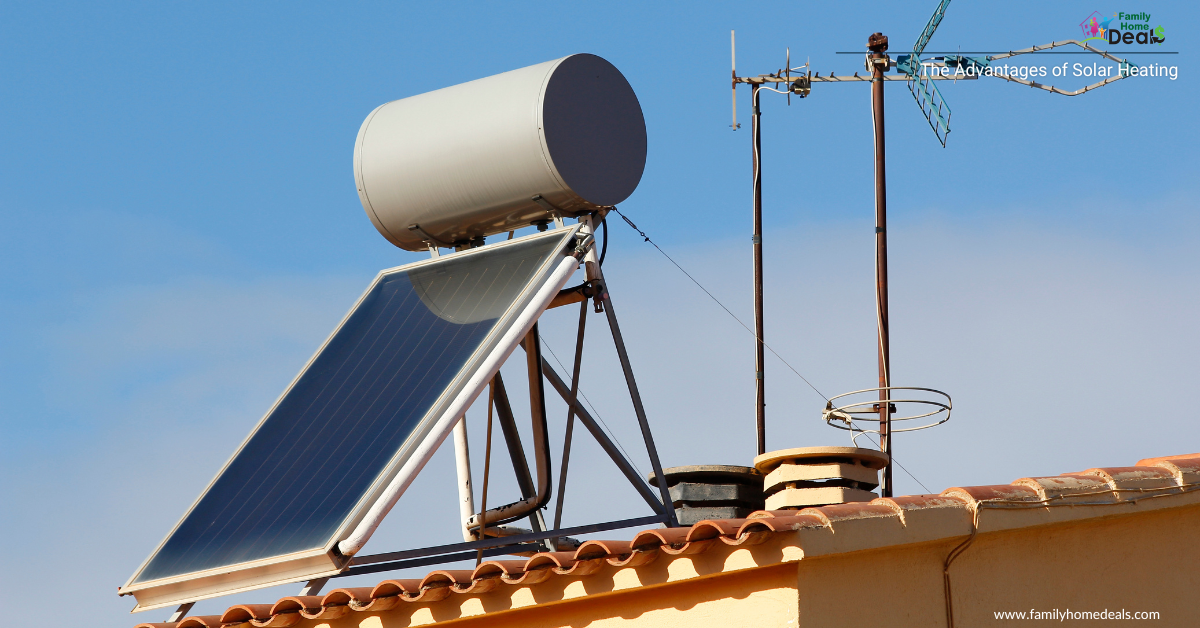
As energy costs continue to climb, finding affordable and environmentally friendly alternatives to traditional heating methods is becoming increasingly important. Rising oil prices make heating with oil a financially risky choice, and gas and electricity are not far behind in their cost increases. Many homeowners are now exploring solar energy as a viable solution. While the upfront investment in solar heating systems can seem daunting, the long-term benefits, coupled with government incentives, make it an increasingly appealing option for energy-conscious homeowners.
But how practical is heating your entire home using solar energy? Can it truly provide a reliable solution in colder months or overcast climates? The truth is, while heating solely with solar energy may not be realistic for every household, supplementing your existing heating system with solar technology can significantly reduce energy consumption and slash utility bills. This article will guide you through the basics of solar heating, the options available, and how combining solar with other sustainable systems can make your home both eco-friendly and cost-effective.
Why Solar Heating?
Heating your home using solar energy is more than just a trendy eco-friendly option; it’s a forward-thinking investment. Conventional heating systems that rely on fossil fuels like oil, natural gas, and even electricity are subject to fluctuating prices and contribute to environmental pollution. Solar heating systems, on the other hand, tap into an abundant and renewable resource—the sun—reducing your dependence on non-renewable energy sources and, over time, saving you significant amounts of money.
Despite the high initial installation cost, solar heating systems can pay for themselves within a few years through reduced energy bills, and tax credits, rebates, and government subsidies can offset a large portion of these upfront costs. In the long term, solar heating can help shield you from volatile energy prices and contribute to lowering your household’s carbon footprint.
Solar Heating Basics: How Does It Work?
Solar energy heating systems come in two main types: solar thermal panels and photovoltaic (PV) panels. It’s important to note the difference between these two. Photovoltaic panels generate electricity by converting sunlight into energy, while solar thermal panels are specifically designed for heating. Solar thermal panels, which are the focus for home heating, capture the sun’s heat and use it to warm water, which can then be used for both domestic hot water and heating your home.
Solar Thermal Panels: Efficient Water Heating
The primary technology behind solar thermal heating involves solar collectors, which are placed on your roof or in an open area with good sun exposure. These collectors trap sunlight and convert it into heat. This heat is transferred to a heat transfer fluid (often antifreeze or water), which then circulates through a system of pipes to heat water stored in a tank or cumulus cloud. The heated water can be used for everyday purposes like showers, dishwashing, and laundry, or it can be circulated through radiators or underfloor heating systems to warm your home.
Solar water heaters can provide up to 70% of the hot water needed for a household, depending on the region’s climate and the system’s size. In particularly sunny regions, solar systems can significantly reduce reliance on other energy sources for heating, but in colder or cloudier climates, an auxiliary heating system is often necessary to supplement solar during the winter months.
The Advantages of Solar Heating
- Lower Energy Bills: Solar thermal systems reduce the amount of conventional energy needed to heat your home. Although it’s unlikely that solar will cover 100% of your heating needs year-round, it can dramatically reduce your reliance on fossil fuels, especially for water heating, which constitutes a large part of energy consumption in households.
- Environmentally Friendly: Solar energy is renewable, clean, and sustainable. Using solar heating reduces greenhouse gas emissions, lowering your household’s carbon footprint and contributing to global efforts to combat climate change.
- Increased Property Value: Homes equipped with solar heating systems are increasingly attractive in the real estate market. Buyers are often willing to pay a premium for homes with energy-efficient features, especially as energy costs continue to rise.
- Government Incentives: Many governments offer tax credits, rebates, and incentives for homeowners who install solar energy systems. These incentives can significantly reduce the overall cost of installation and make solar heating a more affordable option.
Combining Solar with Other Heating Systems
While solar energy can cover a large portion of your home’s hot water needs, it may not be enough to meet 100% of your heating demand, particularly in colder climates or during winter when sunlight is scarce. For this reason, many homeowners choose to integrate solar heating with a backup system. A popular and eco-friendly option is a wood-burning boiler or stove.
Wood Boilers and Stoves: An Ideal Companion to Solar Heating
A wood boiler or stove can be connected to the water heating circuit, ensuring a seamless integration with your solar heating system. Wood is a renewable resource, and modern wood stoves and boilers are highly efficient, burning cleaner and producing fewer emissions than traditional fireplaces. When the sun isn’t shining enough to fully heat your water, the wood stove can kick in, providing enough energy to maintain a comfortable temperature in your home and ensure an adequate supply of hot water.
In addition, combining solar and wood heating is both practical and cost-effective. While wood fuel can be significantly cheaper than oil or gas, using it only as a supplement to solar heating further reduces its overall consumption, making this hybrid approach a wise financial and environmental investment.
Installation and Maintenance: What to Expect
Before installing a solar heating system, it’s crucial to consult with a certified professional who can assess your home’s specific requirements. Solar systems are not one-size-fits-all; each home has different energy needs based on size, location, and existing heating infrastructure.
- Planning the Installation: For new builds, integrating solar heating into the design process is ideal. Underfloor heating is a particularly efficient way to distribute the heat from solar thermal systems. However, for existing homes, retrofitting solar heating systems is also possible. Radiators already installed in the home can be connected to the solar system, reducing the need for costly renovations.
- Safety and Expertise: While solar heating technology is increasingly accessible, its installation must be done with care. Incorrect setup can result in inefficiencies, leaks, or even damage to your home. Make sure to hire a recognized professional to install your solar system. They will ensure it is done safely and in accordance with local building codes.
- Maintenance: Like any heating system, solar thermal panels require regular maintenance to ensure they function properly. This includes cleaning the solar collectors and checking the heat transfer fluid to make sure it’s working effectively. With proper care, solar panels can last upwards of 20-30 years, making them a long-term investment for your home.
Is Solar Heating Right for You?
Investing in solar heating may seem like a significant commitment, but the long-term benefits make it a smart choice for homeowners looking to reduce their energy bills and make their homes more sustainable. Solar thermal systems work particularly well in sunny climates but can also be highly effective in temperate zones when combined with a supplemental heating system.
If you’re building a new home or looking to upgrade an outdated heating system, solar energy is an option worth exploring. Request quotes from multiple installers to compare costs, potential savings, and the expected return on investment. While the initial costs may be high, solar heating systems generally pay for themselves in reduced energy bills within a few years, especially when government incentives are factored in.
Take advantage and reduce your electric costs
Heating your home with solar energy is a forward-thinking solution that offers numerous financial and environmental benefits. Though it may not be feasible to rely entirely on solar energy for your heating needs, combining solar thermal panels with a supplemental system such as a wood boiler or stove can significantly reduce energy costs and carbon emissions. Proper installation and maintenance are essential for maximizing efficiency and ensuring that your system runs smoothly for years to come. If you’re considering switching to solar, consult with a professional to determine the best approach for your home, and take advantage of any available incentives to reduce your upfront costs.
Ultimately, solar heating is a sustainable investment that pays dividends in the form of lower energy bills, increased home value, and a reduced carbon footprint—making it a wise choice for eco-conscious homeowners.
VEVOR.com products are high quality with unbeatable prices.
 VEVOR specialized in Business and Industrial Products like Kitchenware, Machinery Tools, Sporting Goods, Pet Products, Home and Garden products. They are always committed to supplying an incredible assortment of excellent quality products with unbeatable prices. VEVOR offers 30 DAYS FREE RETURN, 12 MONTHS WARRANTY, SHIPPING IN 24 HOURS and FREE DELIVERY WITHIN 5 DAYS. For products and discount promotions, visit vevor.com for more details.
VEVOR specialized in Business and Industrial Products like Kitchenware, Machinery Tools, Sporting Goods, Pet Products, Home and Garden products. They are always committed to supplying an incredible assortment of excellent quality products with unbeatable prices. VEVOR offers 30 DAYS FREE RETURN, 12 MONTHS WARRANTY, SHIPPING IN 24 HOURS and FREE DELIVERY WITHIN 5 DAYS. For products and discount promotions, visit vevor.com for more details.



